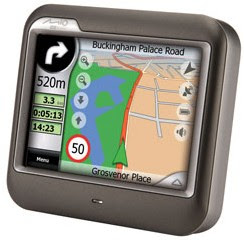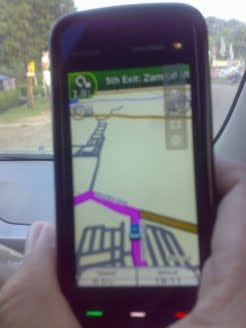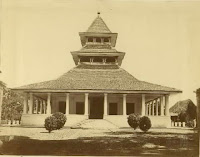Today, nearly everyone joined friendster, must be joined facebook too, and you know who is found site of facebook ? Here a story :
“I'm just lucky to be alive." Mark Zuckerberg, the 22-year-old founder and CEO of social-networking site Facebook, is talking about the time he came face-to-face with the barrel of a gun. It was the spring of 2005, and he was driving from Palo Alto to Berkeley.
 When Mark Zuckerberg showed up in Palo Alto three years ago, he had no car, no house, and no job. Today, he's at the helm of a smokin'-hot social-networking site, Facebook, and turning down billion-dollar offers. Can this kid be for real?
When Mark Zuckerberg showed up in Palo Alto three years ago, he had no car, no house, and no job. Today, he's at the helm of a smokin'-hot social-networking site, Facebook, and turning down billion-dollar offers. Can this kid be for real?
Just a few hours earlier, he had signed documents that secured a heady $12.7 million in venture capital to finance his fledgling business. It was a coming-of-age moment, and he was on his way to celebrate with friends in the East Bay. But things turned weird when he pulled off the road for gas. As Zuckerberg got out of the car to fill the tank, a man appeared from the shadows, waving a gun and ranting. "He didn't say what he wanted," Zuckerberg says. "I figured he was on drugs." Keeping his eyes down, Zuckerberg said nothing, got back into his car, and drove off, unscathed.
Today, it is an episode that he talks about only reluctantly. (A former employee spilled the beans.) But it fits the road he has taken--an adventure with unexpected, sometimes harrowing, moments that has turned out better than anyone might have predicted.
 Zuckerberg's life so far is like a movie script. A supersmart kid invents a tech phenomenon while attending an Ivy League school--let's say, Harvard--and launches it to rave reviews. Big shots circle his dorm to make his acquaintance; he drops out of college to grow his baby and Change The World As We Know It. Just three years in, what started as a networking site for college students has become a go-to tool for 19 million registered users, including employees of government agencies and Fortune 500 companies. More than half of the users visit every day. When a poorly explained new feature brought howls of protests from users--some 700,000--the media old and new jumped to cover the backlash. But Facebook emerged stronger than ever. According to comScore Media Metrix, which tracks Web activity, it is now the sixth most-trafficked site in the United States--1% of all Internet time is spent on Facebook.
Zuckerberg's life so far is like a movie script. A supersmart kid invents a tech phenomenon while attending an Ivy League school--let's say, Harvard--and launches it to rave reviews. Big shots circle his dorm to make his acquaintance; he drops out of college to grow his baby and Change The World As We Know It. Just three years in, what started as a networking site for college students has become a go-to tool for 19 million registered users, including employees of government agencies and Fortune 500 companies. More than half of the users visit every day. When a poorly explained new feature brought howls of protests from users--some 700,000--the media old and new jumped to cover the backlash. But Facebook emerged stronger than ever. According to comScore Media Metrix, which tracks Web activity, it is now the sixth most-trafficked site in the United States--1% of all Internet time is spent on Facebook.
ComScore also rates it the number-one photo-sharing site on the Web, with 6 million pictures uploaded daily. And it is starting to compete with Google and other tech titans as a destination for top young engineering talent in Silicon Valley. Debra Aho Williamson, a senior analyst at eMarketer, says it is on track to bring in $100 million in revenue this year--serious money indeed.
Yet there is an undercurrent of controversy about whether Mark Zuckerberg is making the right decisions about the juggernaut he has created. Late last year, a blog called TechCrunch posted documents said to be a part of an internal valuation of Facebook by Yahoo. The documents projected that Facebook would generate $969 million in revenue, with 48 million users, by 2010. The New York Times and others reported that Yahoo had made a $1 billion offer to buy Facebook--and Zuckerberg and his partners had turned it down. This followed an earlier rumor of a $750 million offer from Viacom. Yahoo, Viacom, and Facebook would not comment on the deal talk (and they still won't). But Silicon Valley has been abuzz ever since.
"It's all been very interesting," deadpans Zuckerberg, sitting in a conference room in Facebook's Palo Alto headquarters. He looks every bit the geek in his zippered brown sweatshirt, baggy khakis, and Adidas sandals. He came into the room eating breakfast cereal from a paper bowl with a plastic spoon. He still lives in a rented apartment, with a mattress on the floor and only two chairs and a table for furniture. ("I cooked dinner for a girlfriend once," he admits at one point. "It didn't work well.") He walks or bikes to the office every day.
Zuckerberg's college-kid style reinforces the doubts of those who see the decision to keep Facebook independent as a lapse in judgment. In less than two years, the two reigning Web 2.0 titans have sold out to major corporations: MySpace accepted $580 million to join News Corp., and YouTube took $1.5 billion from Google. Surely any smart entrepreneur would jump at a chance to piggyback on those deals.
Looming over the Facebook talk is the specter of Friendster, the first significant social-networking site. It reportedly turned down a chance to sell out to Google in 2002 for $30 million, which if paid in stock, would be worth about $1 billion today. Now Friendster is struggling in the Web-o-sphere, having been swiftly eclipsed by the next generation of sites. The same thing could happen to Facebook. New social-networking sites are popping up every day. Cisco bought Five Across, which sells a software platform for social networking to corporate clients. Microsoft is beta-testing a site named Wallop. Even Reuters is planning to launch its own online face book, targeting fund managers and traders.
So is Zuckerberg being greedy--holding out for a bigger money buyout? If so, will that come back to haunt him? If not, what exactly is his game plan?
Zuckerberg's answer is that he's playing a different kind of game. "I'm here to build something for the long term," he says. "Anything else is a distraction." He and his compatriots at the helm of the company--cofounder and VP of engineering Dustin Moskovitz, 22, his roommate at Harvard, and chief technology officer Adam D'Angelo, 23, whom he met in prep school--are true believers. Their faith: that the openness, collaboration, and sharing of information epitomized by social networking can make the world work better. You might think they were naive, except that they're so damn smart and have succeeded in a way most people never do. From a ragtag operation run out of sublet crash pads in Palo Alto, they now have two buildings (soon to be three) of cool gray offices and employ 200 people who enjoy competitive salaries and grown-up benefit packages--not to mention three catered meals a day with free laundry and dry cleaning thrown in. And they continue to crank out improvements to a Web site that is in every meaningful way a technological marvel.
Right now, the folks who fronted Zuckerberg that $12.7 million back in the spring of 2005 and the other venture investors whose money and connections have helped juice Facebook's growth describe themselves as content. After all, since news of the Yahoo deal surfaced, the user base has continued to boom, arguably increasing Facebook's value. But when those money guys start agitating to realize a gain on their investment, can a sale--or more likely an IPO--be far behind?
"What most people think when they hear the word 'hacker' is breaking into things."
Zuckerberg admits to being a hacker--but only if he's sure you understand that the word means something different to him. To him, hacker culture is about using shared effort and knowledge to make something bigger, better, and faster than an individual can do alone. "There's an intense focus on openness, sharing information, as both an ideal and a practical strategy to get things done," he explains. He has even instituted what he calls "hackathons" at Facebook--what others might call brainstorming sessions for engineers.
But it was old-fashioned breaking-and-entering hacking that spawned Facebook--and Zuckerberg was the culprit. Zuckerberg grew up in the well-to-do New York suburb of Dobbs Ferry, the second of four kids and the only son of a dentist (he has no cavities) and a psychiatrist (insert your own mental-health joke here). He began messing around with computers early on, teaching himself how to program. As a high school senior, at Phillips Exeter Academy, he and D'Angelo built a plug-in for the MP3 player Winamp that would learn your music listening habits, then create a playlist to meet your taste. They posted it as a free download and major companies, including AOL and Microsoft, came calling. "It was basically, like, 'You can come work for us, and, oh, we'll also take this thing that you made,'" Zuckerberg recalls. The two decided to go to college instead, D'Angelo to Caltech and Zuckerberg to Harvard.
"I'm here to build something for the long term. Anything else is a distraction. "
-Mark Zuckerberg
That's where the hacking episode occurred. Harvard didn't offer a student directory with photos and basic information, known at most schools as a face book. Zuckerberg wanted to build an online version for Harvard, but the school "kept on saying that there were all these reasons why they couldn't aggregate this information," he says. "I just wanted to show that it could be done." So one night early in his sophomore year, he hacked into Harvard's student records. He then threw up a basic site called Facemash, which randomly paired photos of undergraduates and invited visitors to determine which one was "hotter" (not unlike the Web site Hot or Not). Four hours, 450 visitors, and 22,000 photo views later, Harvard yanked Zuckerberg's Internet connection. After a dressing-down from the administration and an uproar on campus chronicled by The Harvard Crimson, Zuckerberg politely apologized to his fellow students. But he remained convinced he'd done the right thing: "I thought that the information should be available." (Harvard declined to comment on the episode.)
source : Ellen McGirt






























